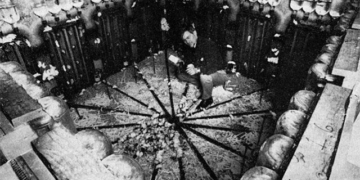The future of cities is not just about concrete buildings; it is about homes intricately woven with greenery, creating a miniature ecosystem within.
In the face of limited land and a growing population, urban areas must continuously construct new housing for a massive number of residents. However, the concrete encasement of cities increases pressure on already strained infrastructure.
Designers are envisioning the buildings of tomorrow, where greenery is integrated within and cleverly interwoven with architectural structures, enhancing urban greenery while providing spatial and aesthetic highlights. Here are some notable projects that combine plants and bricks.
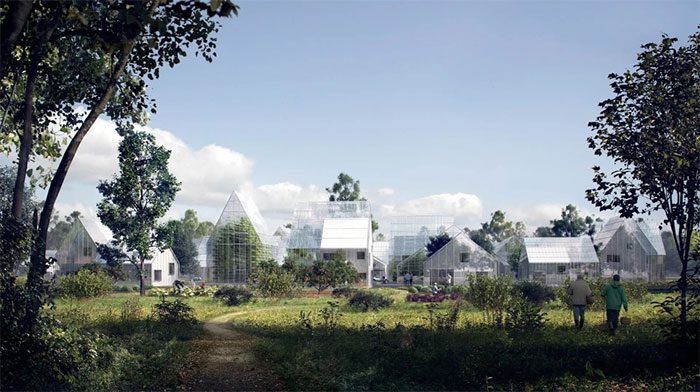
ReGen Village
, Almere (Netherlands) is a model for ecological village development with an unprecedented unique idea. In addition to integrating green spaces to enhance the living environment, this village is equipped with a natural energy harvesting system to provide electricity for daily living and production. (Photo: EFFEKT Arkitekter ApS).

The name ReGen means regenerative, indicating that the output of one process serves as the input for another. This way, energy will be reused using the most advanced technologies. Moreover, the village also features an energy storage facility, an organic food production workshop, vertical farming gardens, and environmentally friendly water management and waste processing systems. (Photo: EFFEKT Arkitekter ApS).

Power Plant – Rooftop Greenhouse. Designed by Marjan van Aubel, an award-winning architect known for solar energy and renewable fuel designs, she is the creator of the world’s first self-sustaining energy greenhouse. Using solar energy, the house can regulate its internal temperature and generate electricity for use. (Photo: Marjan van Aubel).
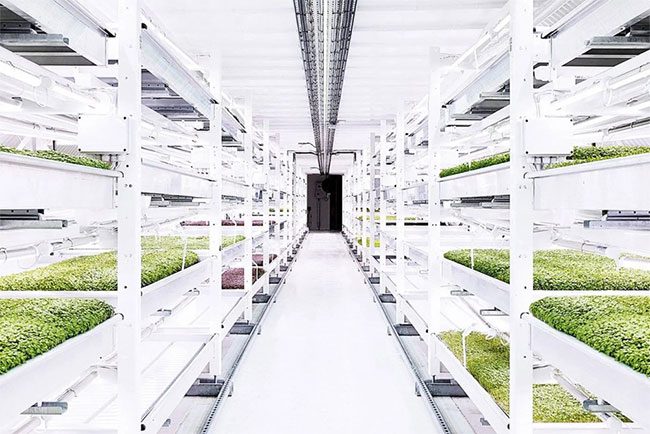
Founded in 2015 by Zero Carbon Food and supported by Michel Roux, Growing Underground is an underground farm located in the heart of London, specializing in the production of microgreens. Situated 33 meters below Clapham High Street, in what was once a WWII soldier shelter, this farm supplies vegetables to the entire capital. (Photo: Growing Underground).
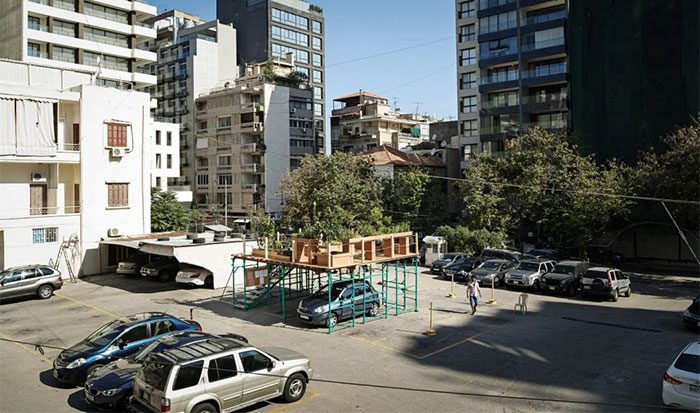
Urban Hives is a project by artist Nathalie Harb, aimed at creating garden plots in parking lots. These plots are roughly the size of a car’s footprint. When not occupied by vehicles, they remain close to the ground, but when a car parks, the system elevates the plots. These plots serve as sunshades for vehicles while maximizing green space in the city. (Photo: Nathalie Harb).

GreenBelly Vertical Garden is a design that utilizes limited urban space, specifically the backs of buildings. The plant scaffolding is made from recycled materials, and the fertilizers used are organic waste from local residents. Currently, GreenBelly is only being developed on existing apartment complexes, but in the future, the team plans to build their own residential area combined with vertical gardens. (Photo: GreenBelly).
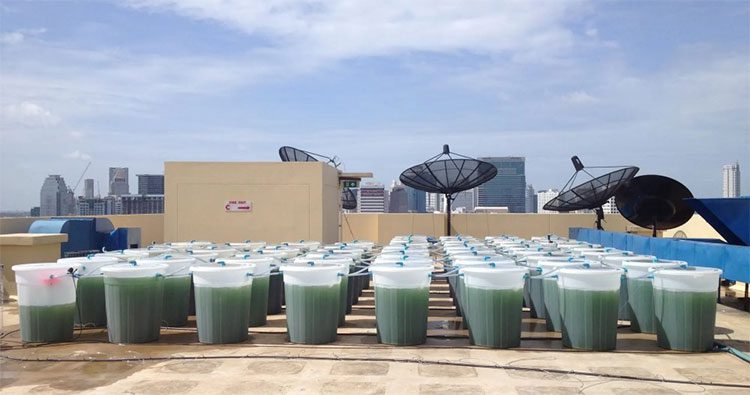
EnerGaia Spirulina is a project developed in Bangkok, specializing in the production of fresh algae products using green and sustainable technology. Spirulina is the main type of algae cultivated by the team, grown in rooftop spaces using healthy organic materials. The project’s goal is to address both nutritional and urban environmental issues simultaneously. (Photo: Phil.benusa).

Floating Farm Rotterdam in the Netherlands began with 32 cows and plans to increase in number in the future. This facility will produce and process fresh milk for local residents, particularly for school children. By floating on the water, this project will not occupy urban space and will utilize natural resources efficiently. (Photo: Beladon).

Founded in 1995 by chef and environmental activist Alice Waters, Edible Schoolyard is a project initiated to encourage teachers in schools to change students’ perceptions of food, promoting the active cultivation of organic gardens and healthy cooking, which is not only beneficial for health but also minimizes negative impacts on nature. (Photo: Bruce Damonte/The Edible Schoolyard Project).

In the heart of Taipei (Taiwan), BuzzBuilding is a self-sufficient farm design primarily operated by bees. In this 10,350 square meter area, bees and other insects will be safe to live and pollinate plants instead of facing threats as they do in natural environments.

















































